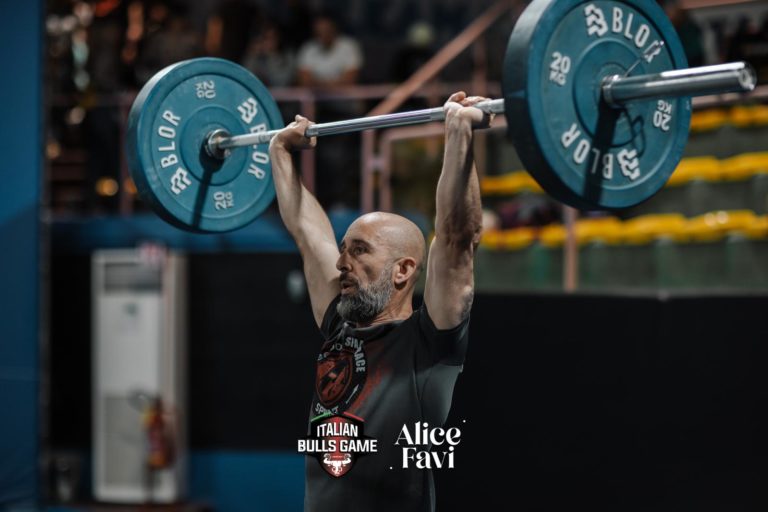Question: How do we develop aerobic capacity in our athletes?
June 18, 2025
Question: How do we develop aerobic capacity in our athletes?
In the fitness world, CrossFit stands out for its comprehensive view of physical conditioning and health. At the core of this methodology lies the belief that to achieve optimal wellness and complete physical fitness, it is essential to systematically train each of the three metabolic pathways: phosphagen, glycolytic, and oxidative. Training regularly — ideally five times per week — according to the principles of CrossFit provides the body with all the necessary stimuli to develop cardiorespiratory and cardiovascular endurance, guiding the individual along the path from sickness to health and ultimately to fitness.
However, supplementing training with targeted strategies is possible for those looking to further enhance their aerobic capacity. In this article, we’ll explore how to develop greater oxidative system efficiency, improving long-term performance and physical resilience.
Aerobic capacity refers to how efficiently the cardiovascular and respiratory systems can sustain prolonged physical activity by primarily using aerobic metabolism to produce energy (ATP). High aerobic capacity allows athletes to maintain performance over extended periods by predominantly using oxygen to generate energy, thereby delaying the onset of fatigue.
This capacity can be divided into two main components:
It’s helpful to refer to some fundamental physiological parameters to better understand how to improve and assess aerobic capacity.

Leonardo Renzi (on the left), together with his friend and fellow CrossFit athlete, the late Ivan Leonardi.
The aerobic threshold represents the minimum intensity level at which the lactic anaerobic metabolism starts to produce lactate, but in an amount that does not exceed the body’s ability to clear it. This means lactate concentration in the blood remains stable, typically around 2 mmol/l.
This threshold corresponds to the lowest intensity that still triggers positive adaptations in metabolic efficiency, improving oxygen utilization and stimulating fat metabolism (lipolysis) as the primary energy source.
Practically, the aerobic threshold is generally between 60% and 70% of the maximum heart rate.
One of the primary indicators of aerobic capacity is cardiac output, the amount of blood the heart can pump per minute. This value is obtained by multiplying heart rate (beats per minute) by stroke volume, which is the amount of blood ejected from each ventricle per contraction.
Cardiac output plays a central role in developing aerobic system efficiency, directly affecting the body’s capacity to transport oxygen and nutrients. Additionally, it influences the heart’s morphological adaptation through two main types of cardiac hypertrophy: eccentric and concentric.
This adaptation involves an increase in the internal volume of the heart due to the elongation of cardiac muscle fibers. The result is a larger heart capable of holding and pumping a greater volume of blood. It also improves coronary vascularization and increases venous caliber, which helps in more effective metabolite clearance. Other benefits include a lower resting heart rate and reduced blood pressure.
Eccentric hypertrophy mainly develops through long-duration, low-intensity aerobic training, such as extensive endurance sessions characterized by high volume and low circulatory pressure.

This involves a thickening of the heart walls due to the growth of cardiac muscle fibers. Unlike eccentric hypertrophy, the internal volume of the heart may remain unchanged or even slightly decrease. This type of adaptation results in a heart that is more “powerful” in terms of contraction strength, but it does not improve blood-holding capacity.
Concentric hypertrophy is typical of high-intensity anaerobic training or heavy resistance training (e.g., weightlifting), which involves high resistance and elevated blood pressure.
To fully develop the aerobic system and optimize energy output, it’s crucial to promote eccentric hypertrophy or at least maintain a balance between the two forms of adaptation. The key lies in increasing stroke volume, which reaches its peak values when heart rate remains between 70-80% of maximum heart rate (MHR).
For this reason, low-to-moderate intensity endurance exercises such as running, cycling, swimming, or rowing, performed for prolonged periods, remain the foundation of effective aerobic training.
The anaerobic threshold, also known as the lactate threshold, is the critical exercise intensity level beyond which the production of lactate in the blood exceeds the body’s ability to eliminate it efficiently. Until this point, lactate and hydrogen ions (H⁺) are produced but can be buffered and removed without significant accumulation. Once this threshold is exceeded, however, lactate begins to rise progressively, leading to acidification of the muscular environment.
This phenomenon results in an increase in hydrogen ions (H⁺), which alter cellular pH and impair muscle contraction, causing rapid fatigue. To avoid failure, the athlete is forced to reduce intensity or stop.
Crossing the anaerobic threshold means that the aerobic system can no longer meet the energy demands alone: the anaerobic lactic system becomes increasingly active, which is less efficient and generates more metabolic waste.
In contrast, when intensity remains below the threshold, the aerobic system dominates energy production, enabling prolonged efforts lasting even several hours. For this reason, above-threshold exercises can only be sustained for short durations, generally between 5 and 20 minutes, depending on the athlete’s training level.
Although scientific tests such as spirometry or blood lactate analysis provide accurate measurements, in practice, one can estimate the anaerobic threshold using a heart rate monitor, based on the following guidelines:
For example, a 30-year-old athlete (with an estimated HRMax of 190 bpm) will have an anaerobic threshold between 160 and 170 bpm.
Aerobic capacity development is linked to numerous physiological adaptations, including:
Anaerobic lactic resistance refers to an athlete’s ability to endure and tolerate lactate accumulation in muscles and blood during intense efforts. However, this differs from basic aerobic endurance, which doesn’t improve lactate tolerance but enhances the ability to clear lactate quickly. These are two separate but interconnected qualities: one boosts lactate tolerance, the other improves its removal.
Lactate clearance is the body’s ability to eliminate lactate from muscles and the bloodstream. It is strongly tied to aerobic efficiency and depends on three key physiological factors:
Improving these factors delays the onset of the anaerobic threshold and enhances performance during high-intensity efforts, such as lactate-heavy CrossFit workouts or sports involving frequent bursts of exertion.
Training lactate clearance isn’t just about “enduring fatigue” — it’s about managing it and recovering more quickly from it, leading to more stable performance under extreme conditions.
Every training program must consider specific work on the different energy systems (ATP-PC/alactic, lactic, aerobic) throughout the weekly and monthly plan to encourage development in all time domains.
The best tools for building aerobic endurance involve large muscle groups and minimal peripheral resistance, allowing consistent heart rate control throughout the session:
Targeted aerobic capacity training with barbells or dumbbells is not ideal, as peripheral resistance causes vasoconstriction and lactate build-up, forcing the athlete to pause and preventing the target heart rate and duration from being maintained.

To improve aerobic function, you must train within medium-to-low intensities (60-80% HRMax). Volume should range from 25 to 70 minutes, as physiological adaptations require time. A frequency of once per week for at least four weeks as an active rest day is recommended before progressing to anaerobic threshold work. Consider the following options:
Continuous low-intensity effort; fundamental for aerobic base-building.
Examples:
Intervals longer than 2 minutes promote cardiovascular adaptations.
Examples:
Developed in Sweden in the 1930s by Gosta Holmer, combining LISS and interval methods. It modulates heart rate intensity, breaking the monotony of steady-state training.
Examples:

Work intensities should be high, typically 85-90% HRMax, with volumes between 12 and 25 minutes. The frequency is once per week after completing aerobic capacity development.
Like LISS but at higher intensities.
Examples:
High-intensity intervals with recovery equal to half the work period.
Examples:
Thanks to its alternating format, the EMOM (every minute on the minute) method can effectively train the anaerobic threshold. Examples:
20-minute EMOM:
32-minute EMOM:
CrossFit is a unique and comprehensive discipline in the contemporary fitness landscape. Its ability to integrate the different energy systems (alactic, lactic, and aerobic) makes it an extremely effective tool for improving athletic performance across all physical activities.
When aerobic training is strategically included within a structured program, it enables targeted development of oxidative capacity, optimizes cardiac output, and raises the anaerobic threshold. These adaptations lead to greater resistance to fatigue, faster recovery capacity, and better effort management, even during the most intense phases of workouts.
Have a question for a coach? Please submit that here.
 Leonardo Renzi (CF-L2) is a primary school teacher, soccer and CrossFit coach, and holds a degree in Sports Science and a Master’s degree in Sports Management. His mission is to show that CrossFit is for everyone, not just for advanced athletes, but also for sedentary individuals and those in recovery
Leonardo Renzi (CF-L2) is a primary school teacher, soccer and CrossFit coach, and holds a degree in Sports Science and a Master’s degree in Sports Management. His mission is to show that CrossFit is for everyone, not just for advanced athletes, but also for sedentary individuals and those in recovery